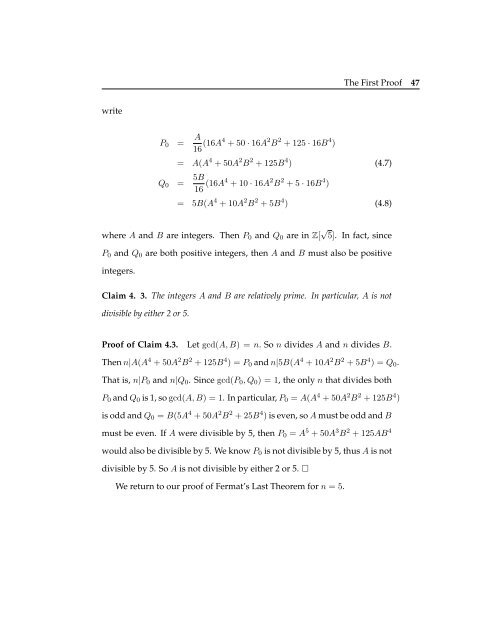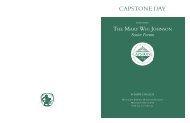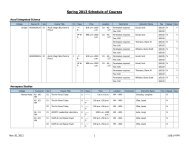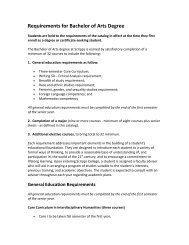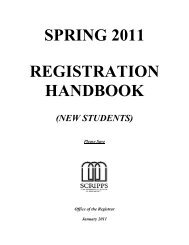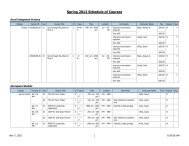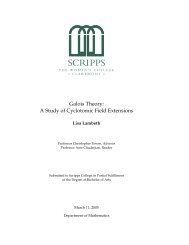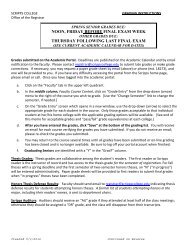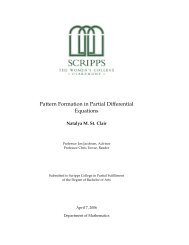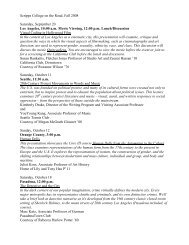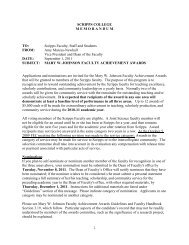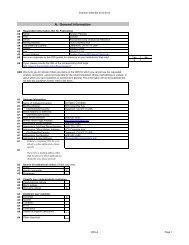Sophie Germain: mathématicienne extraordinaire - Scripps College
Sophie Germain: mathématicienne extraordinaire - Scripps College
Sophie Germain: mathématicienne extraordinaire - Scripps College
You also want an ePaper? Increase the reach of your titles
YUMPU automatically turns print PDFs into web optimized ePapers that Google loves.
The First Proof 47<br />
write<br />
P 0 = A 16 (16A4 + 50 · 16A 2 B 2 + 125 · 16B 4 )<br />
= A(A 4 + 50A 2 B 2 + 125B 4 ) (4.7)<br />
Q 0 = 5B<br />
16 (16A4 + 10 · 16A 2 B 2 + 5 · 16B 4 )<br />
= 5B(A 4 + 10A 2 B 2 + 5B 4 ) (4.8)<br />
where A and B are integers. Then P 0 and Q 0 are in Z[ √ 5]. In fact, since<br />
P 0 and Q 0 are both positive integers, then A and B must also be positive<br />
integers.<br />
Claim 4. 3. The integers A and B are relatively prime. In particular, A is not<br />
divisible by either 2 or 5.<br />
Proof of Claim 4.3. Let gcd(A, B) = n. So n divides A and n divides B.<br />
Then n|A(A 4 + 50A 2 B 2 + 125B 4 ) = P 0 and n|5B(A 4 + 10A 2 B 2 + 5B 4 ) = Q 0 .<br />
That is, n|P 0 and n|Q 0 . Since gcd(P 0 , Q 0 ) = 1, the only n that divides both<br />
P 0 and Q 0 is 1, so gcd(A, B) = 1. In particular, P 0 = A(A 4 + 50A 2 B 2 + 125B 4 )<br />
is odd and Q 0 = B(5A 4 + 50A 2 B 2 + 25B 4 ) is even, so A must be odd and B<br />
must be even. If A were divisible by 5, then P 0 = A 5 + 50A 3 B 2 + 125AB 4<br />
would also be divisible by 5. We know P 0 is not divisible by 5, thus A is not<br />
divisible by 5. So A is not divisible by either 2 or 5. □<br />
We return to our proof of Fermat’s Last Theorem for n = 5.


